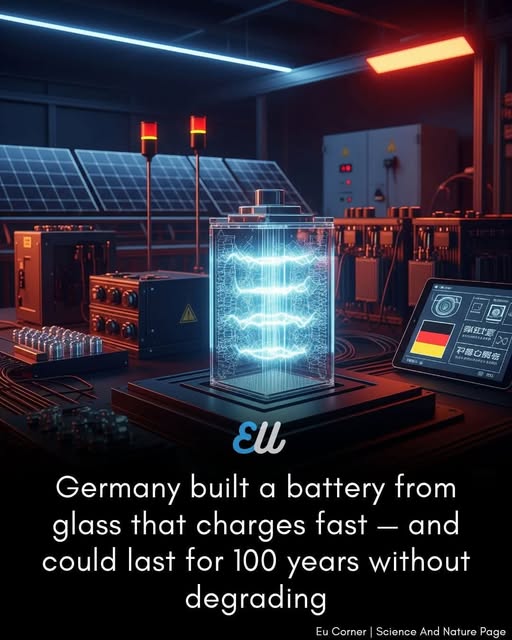
In a high-voltage materials lab near Dresden, German scientists have crafted a revolutionary new battery design — made almost entirely from glass. This isn’t a metaphor. The battery’s solid-state electrolyte is based on crystallized glass infused with special conductive ceramics, offering unheard-of lifespan and stability. Early tests suggest the battery could function for a century — without significant degradation.
The core of the innovation is a glass-based lithium-sodium hybrid solid electrolyte, which is non-flammable, non-toxic, and resistant to both moisture and corrosion. Unlike traditional lithium-ion batteries that degrade after a few thousand cycles, this battery can recharge over 50,000 times — making it ideal for grid-scale storage and electric transportation.
Its internal chemistry avoids common failure modes like dendrite growth and thermal runaway, two issues that plague today’s lithium designs. The glass not only acts as a stabilizer but also enhances ion conductivity at room temperature, meaning no cooling or complex safety systems are required.
Germany’s Federal Energy Institute reports that when connected to solar or wind infrastructure, a single shipping-container-sized unit could store enough energy to power 1,000 homes for a week — and be reused for decades. Its long life and recyclability drastically reduce the environmental footprint of energy storage.
Researchers are now testing the battery in electric buses and rural microgrids. It operates safely in extreme temperatures, charges in under 10 minutes, and can be manufactured with abundant materials — no cobalt or rare earths required. Maintenance costs are nearly zero over its lifetime.
This glass battery may offer the final piece of the renewable energy puzzle — reliable, scalable, safe, and timeless. It doesn’t just beat lithium-ion. It buries it
